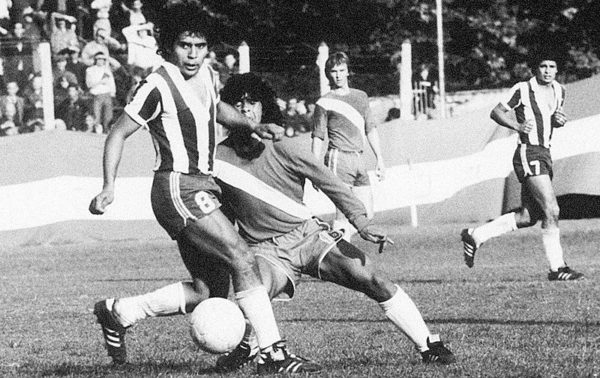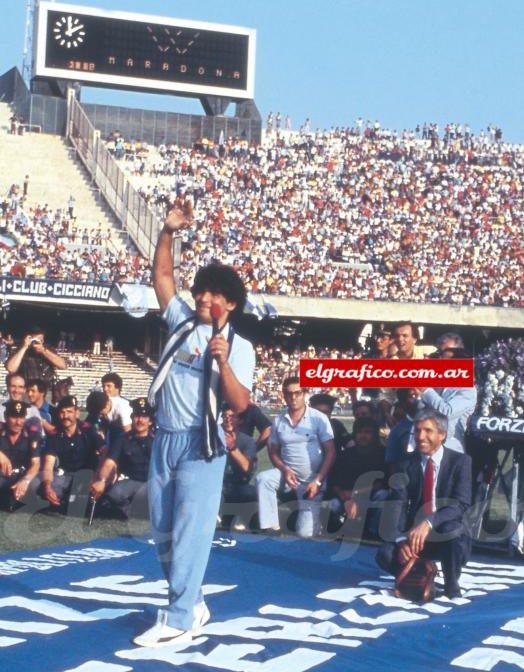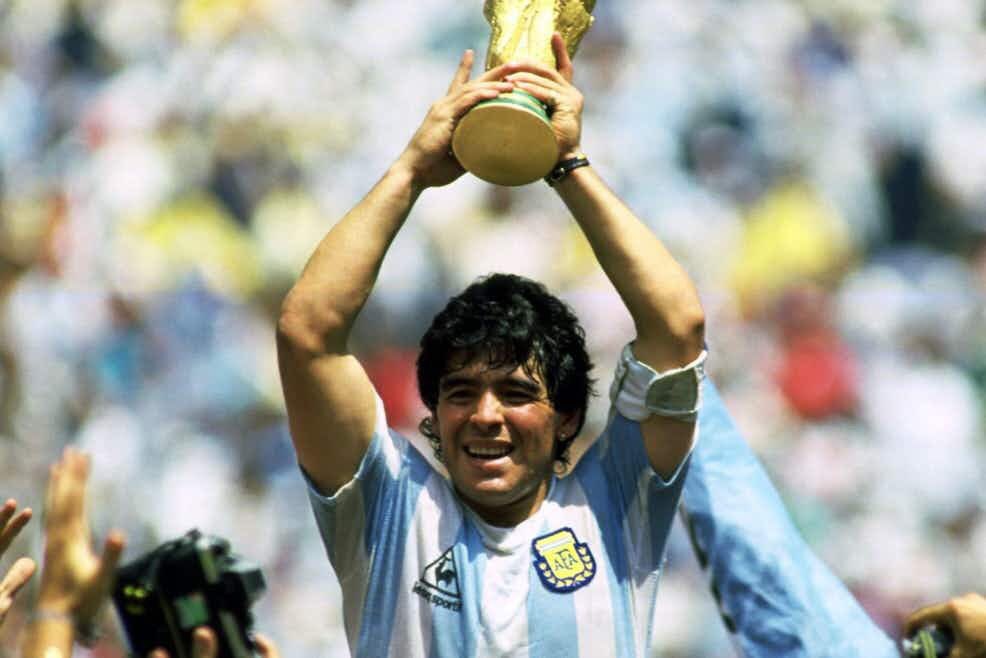Argentine soccer icon Diego Armando Maradona has died of a heart attack on November 25, a month after his 60th birthday. He was regarded by many as one of the world’s greatest-ever soccer players.
He was declared dead near the house of his two daughters and ex-wife Claudia Villafane, according to Express UK. He reportedly received brain surgery earlier this month to remove a blood clot.
Argentina’s president has announced three days of national mourning, and the Argentine soccer association expressed its grief at the sportsman’s death.
Famous for the “Hand of God” goal, he punched the ball into England’s post during the 1986 World Cup quarterfinals and was idolized by many aspiring and professional soccer players alike.
He was one of the two joint winners of the FIFA Player of the 20th Century award.
Diego Armando Maradona was born on October 30, 1960, in Buenos Aires and was raised in Villa Fiorito in a poor area on the periphery of the city.
Ten days before his 16th birthday, on October 20, 1976, Maradona made his professional debut for Argentinos Juniors. A few minutes after entering the field he dribbled the ball through the legs of Juan Domingo Cabrera. This nutmeg, a moment of brilliance, was an immediate sign of the genius that was to come from the player.
“That day I felt I had held the sky in my hands,” is what the young Maradona reportedly said after the game.

In five years at Argentinos Juniors, Maradona scored 115 goals in 167 games before his transfer to Boca Juniors. He moved to Boca Juniors for a transfer fee of $4-million.
Maradona only spent a year at the top Argentine side, it was a successful season and Boca won the league, which would prove to be the only domestic league title that Maradona would win.
Eternas gracias. Eterno Diego. pic.twitter.com/SZVNOJnZ1j
— Boca Jrs. Oficial (desde ?) (@BocaJrsOficial) November 25, 2020
After the 1982 World Cup, Maradona was sold to Spanish club Barcelona for, what was then a world-record fee, $7.6-million.
Maradona’s stay in Barcelona was also shortlived and after two seasons at the club, he left acrimoniously. He made 75 appearances and scored 47 goals.
Thank you for everything, Diego pic.twitter.com/bJ9l3ixY7A
— FC Barcelona (@FCBarcelona) November 25, 2020
In 1984, Maradona moved to his beloved Napoli, again for a world-record fee of $10.48-million.
Maradona was welcomed by 75 000 fans at his presentation.

A local newspaper reportedly wrote that despite the lack of a “mayor, houses, schools, buses, employment and sanitation, none of this matters because we have Maradona.”
Maradona’s arrival immediately changed the fortunes of the Italian club. Prior to Maradona’s arrival, no club from the south of Italy had ever won a league title, this was soon to change.
With a Maradona at the peak of his powers at the helm, Napoli won their first Serie A title in 1986-87. Following this success, murals of the player popped up on the ancient buildings of Naples and children were named in his honour.
People have started a candlelight vigil by a Diego Maradona mural in Naples, Italy. pic.twitter.com/bPMB47cYnE
— ESPN FC (@ESPNFC) November 25, 2020
Napoli won another league title in 1989-90 and finished runners-up on two occasions.
Although he is probably best known for his remarkable exploits with the Argentinian national team. It was in his seven years in Naples that Maradona cemented his legendary status in club soccer. He made 259 appearances for the club and scored 115 goals.
Maradona’s Napoli won several other trophies including the Coppa Italia (1987), the UEFA Cup (1989) and the Italian Supercup in 1990.
The world awaits our words but there are no words to describe the pain we’re going through. Now is the time to grieve.
Diego ? pic.twitter.com/40TTOIDNQ4— Official SSC Napoli (@en_sscnapoli) November 25, 2020
Per Sempre ?
Ciao Diego pic.twitter.com/LzppqlBqLV— Official SSC Napoli (@sscnapoli) November 25, 2020
Diego Maradona lifts the UEFA Cup with Napoli in 1989 ? https://t.co/ukFYSUy0Me pic.twitter.com/kIXsf4pAVT
— UEFA Europa League (@EuropaLeague) November 25, 2020
Tributes and words of sorrow have poured in on social media from players, clubs, footballing bodies and fans across the world.
Football was the first sport I ever loved,
Diego Maradona was my first ever idol.
An absolute genius with a football.
Mexico ‘86 & this goal will always be one of my stand out memories of watching sport.
RIP to a true God of football. ??#maradona #football pic.twitter.com/tFVy7TOrCm— Dave Coldwell (@davidcoldwell) November 25, 2020
This video of Diego Maradona warming up before the 1989 UEFA Cup semi final never gets old.
Rest well, legend. pic.twitter.com/I84drRaC72
— Deji Faremi (@deejayfaremi) November 25, 2020
View this post on Instagram
La Asociación del Fútbol Argentino, a través de su Presidente Claudio Tapia, manifiesta su más profundo dolor por el fallecimiento de nuestra leyenda, Diego Armando Maradona.
Siempre estarás en nuestros corazones ? pic.twitter.com/xh6DdfCFed
— AFA (@afa) November 25, 2020
Napoli president Aurelio de Laurentiis to RMC Info: “We can consider the idea of calling our stadium San Paolo-Diego Armando Maradona”. ??@mohamedbouhafsi
5/7/1984, Diego’s first time at San Paolo.
Imagine this stadium with his name.#D10S pic.twitter.com/BepFdfXKWY
— Fabrizio Romano (@FabrizioRomano) November 25, 2020
Picture: Twitter

